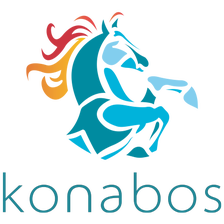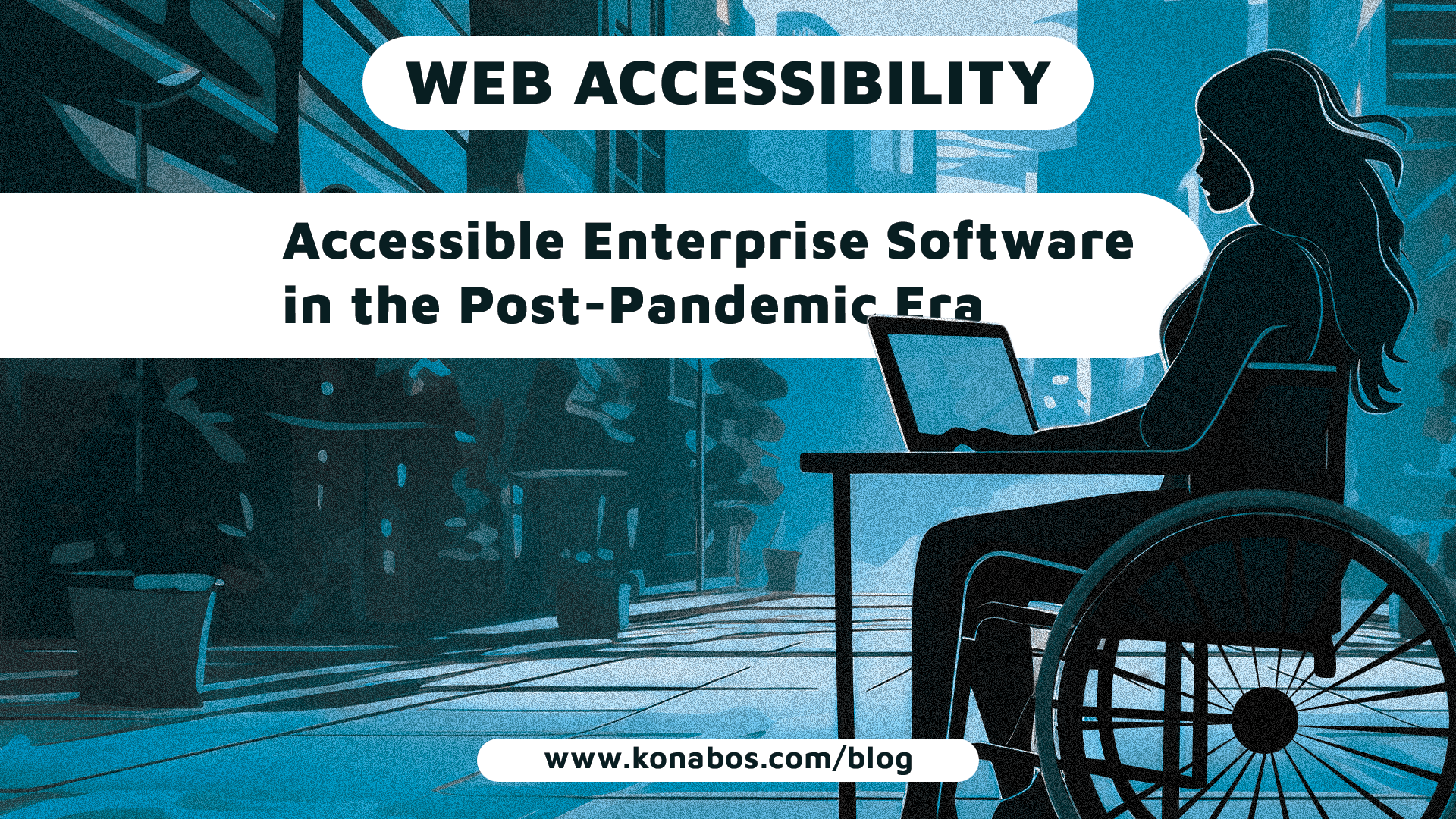The Post-Pandemic Importance of Accessible Enterprise Software
Beth Raduenzel -
16 Jan 2024
Accessibility is a well established practice in the world of e-commerce, where user-friendly interfaces and inclusive design significantly impact site usability, and ultimately product sales. However, the seismic shift towards remote work that came about during and after the pandemic propelled accessibility to the top of the priority list, especially for companies that rely on enterprise software to maintain their day-to-day operations.
The Digital Transformation Surge
As businesses quickly adapted to the changes brought about by the global health crisis, having accessible enterprise software became more important than ever. Remote workforces were now heavily dependent on these digital tools for collaboration, communication, and execution of daily tasks. This shift spotlighted the crucial role accessibility plays in ensuring that every employee, regardless of ability, can navigate and utilize enterprise software efficiently and effectively.
Remote Work Becomes the Norm
Suddenly, considerations such as screen reader compatibility and keyboard navigation, along with other accessibility considerations became essential. Accessibility quickly went from being merely a checkbox on many company’s compliance lists to a strategic necessity. Creating an inclusive remote-work environment that ensured every employee could contribute effectively, regardless of physical location or ability was now a precedence.
In essence, the pandemic made many companies aware of the need for digital accessibility, making it a non-negotiable aspect of enterprise software design. This digital revolution isn’t just a response to current circumstances but an understanding that inclusivity is a cornerstone for sustained success and resilience in an increasingly digital world.
The Inclusive Advantage
The term Curb-Cut Effect beautifully encapsulates how the benefits of accessibility reach beyond the target audience. The literal cutting of curbs was originally done to help individuals in wheelchairs transition between the sidewalk and the street. However, curb-cuts far exceeded their initial purpose by unintentionally benefitting a wide range of people such as those pulling suitcases on wheels, pushing babies and young children in strollers, bikers, workers making large deliveries, etc.
In the context of enterprise software, digital accessibility creates a similar ripple effect by producing a more inclusive and efficient work environment for all users.
Improved User Experience for Everyone
Prioritizing accessibility features such as screen reader compatibility and keyboard navigation, enhances the overall user experience by creating a more intuitive and flexible interface not only for employees with specific accessibility needs, but also for those who may prefer different modes of interaction.
Positive Impact on Productivity and Satisfaction
How can accessibility measures boost morale and lead to a more positive overall work culture?. When digital tools are designed with inclusivity in mind, tasks become more streamlined and accessible to everyone. An inclusive environment helps employees feel valued and supported which directly contributes to increases in employee productivity and job satisfaction.
Enhanced Reputation and Talent Attraction
Companies that prioritize accessibility send a powerful message about their commitment to diversity and inclusion. This commitment not only improves the organization's reputation but also makes it more attractive to job seekers. In a competitive job market, potential employees are drawn to workplaces that demonstrate a genuine dedication to creating an inclusive environment. This can result in a more dynamic and innovative team, reflecting positively on the company's overall success and growth.
In essence, the Curb-Cut Effect in the context of accessible enterprise software, showcases the transformative power of inclusivity. What begins as a targeted effort to accommodate specific needs transcends into a universal enhancement, creating a workplace that is not only accommodating but also more enjoyable and productive for every member of the team.
Legal Mandates, Ethical Imperatives, and the Price of Neglect
Not only is accessibility a good practice, and the right thing to do, it's also a legal requirement in the United States and many other countries. The Americans with Disabilities Act (ADA) has evolved to include various online entities, like websites and mobile applications. Businesses that provide goods or services to the public are expected to ensure that their digital platforms are accessible to individuals with disabilities.
While the ADA does not specify digital accessibility standards, the Department of Justice (DOJ) references the Web Content Accessibility Guidelines (WCAG). WCAG is the international benchmark for web accessibility and is considered the best practice in achieving ADA compliance.
These regulations mandate that businesses ensure their online presence, including websites, applications, and software, is accessible to individuals with disabilities. Ignoring these legal requirements can result in significant consequences, including legal actions, fines, and damage to a company's reputation.
Organizations that fail to meet the ADA’s digital accessibility requirements may risk legal action. Law firm Seyfarth Shaw has tracked the number of lawsuits filed yearly under the ADA since 2013. Their data shows that more than 11,400 people filed an ADA Title III lawsuit in 2021. That number is up 4 percent from the previous year and 320 percent higher than in 2013!
Lawsuits can include anything from financial penalties, to settlement agreements requiring accessibility improvements, and ongoing monitoring of compliance.
Building Accessible Solutions
Let’s be honest, accessibility remediation work done on existing code is not quick or easy. However, don’t let this persuade you from making an honest effort. Many organizations who seek quick, low-cost accessibility compliance solutions fall victim to companies peddling accessibility overlays as a solution. They claim the overlay solution will detect and fix web accessibility issues, however, in practice, these tools are limited in scope and do not constitute a fully compliant solution.
There is no “easy button” solution. Compliance is best achieved by consulting with accessibility experts who will provide practical accessibility training, specialized insights and custom recommendations for your situation. Working with experts who understand the nuances of accessibility ensures that your site or software is not only compliant with accessibility standards but also genuinely inclusive and user-friendly for individuals with diverse abilities.
Businesses must also understand that achieving full accessibility compliance isn’t the finish line, it’s an ongoing process requiring regular assessments and accessibility updates. Each and every site or product update introduces the potential for accessibility regression. Using an automated accessibility testing tool both before and after each new product release is a great way to check for any changes to accessibility features.
The most successful accessibility improvement efforts are achieved by businesses that embrace inclusivity as a core value using a top-down approach. Leadership sets the tone for the entire organization and sends a clear message that accessibility is a fundamental aspect of how the culture and how the company operates.
Success Stories
The following stories showcase the successes of a few well-known companies that have prioritized and implemented accessible enterprise software.
Microsoft Teams
Microsoft Teams, a collaboration platform integrated into Microsoft 365, has implemented several accessibility features to enhance user experience.
Immersive Reader and Read Aloud features benefit individuals with dyslexia or other reading challenges.
Keyboard Shortcuts and Focus Mode reduce distractions and improve the user experience for those who rely on keyboard input.
Color Contrast and High Contrast Themes cater to users with visual impairments or sensitivity to bright colors. These options enhance visibility and readability
Live Caption provides real-time transcription of spoken words during a meeting, allowing users with hearing impairments to follow the conversation seamlessly.This feature also supports multiple languages, for users who prefer or require captions in languages other than the default language of the meeting.
Apple
For years now, Apple has consistently demonstrated a commitment to accessibility across its range of products, showcasing a dedication to inclusivity.
VoiceOver, Apple's built-in multi-device screen reader, has been a game-changer for users with visual impairments. This feature provides spoken descriptions of on-screen elements, enabling users to navigate and interact with iOS, macOS, and other Apple devices seamlessly.
Magnifier and Display Accommodations on MacOS allow users to customize text size, boldness, and color contrast. These features, which cater to individuals with varying visual needs, highlight the level of importance Apple puts on visual accessibility.
Live Listen for AirPods amplifies audio for users with hearing impairments. This accessibility feature essentially turns Apple AirPods into a personalized listening device by enhancing the audio experience for those who may have difficulty hearing others in various environments.
Slack
The popular team collaboration platform saw their user base grow by 25% in the two weeks following the announcement of the COVID-19 pandemic by the World Health Organization. Slack’s commitment to accessibility ensures a more inclusive and user-friendly experience.
Keyboard Shortcuts and Navigation allow users to navigate channels, messages, and other features without solely relying on mouse interactions.
Screen Reader Compatibility provides alternative text for images and ensures that interface elements are properly labeled. This enhances the experience for users with visual impairments, and allows them to engage with conversations and content effectively.
High Contrast Themes acknowledges the diverse visual needs of Slack’s user base. This feature caters to users with low vision or sensitivity to bright colors, by offering users a more accessible and customizable interface.
The ongoing accessibility improvement efforts made by each of these companies showcases their dedication to creating a more inclusive and user-friendly digital environment. And the outcomes are measurable in terms of improved efficiency, user satisfaction, and market competitiveness.
Future Focus
The road to a resilient and equitable future requires a dedicated commitment to accessible technology. Businesses must not view inclusivity as a burden but as an investment in innovation, adaptability, and long-term success. The lessons learned from the pandemic illuminate how organizations that prioritize accessibility are in a better position to withstand challenges, attract diverse talent, and promote a positive and inclusive company culture.
In conclusion, accessible technology is not just a necessity for the present; it is a guiding principle for the future. As businesses embrace inclusivity at the core of their values, they not only contribute to a more equitable society but also position themselves as leaders in a digital landscape where accessibility is the key to enduring success and resilience. The call to action is clear; the journey towards a more inclusive future begins with the conscious decision to prioritize accessible technology in every facet of business operations.

Beth Raduenzel
Working for large Fortune 100 and 500 companies and small tech startups has given Beth a range of rarely attained experience. Beth has enjoyed improving user experiences across B2B, B2C, and SaaS Enterprise apps, whether as part of a large design team or wearing many hats as the sole designer, researcher, and editor at small startups.
Beth is the author of two published articles on web accessibility and is currently working on a tactile children’s book for the blind.



Share on social media